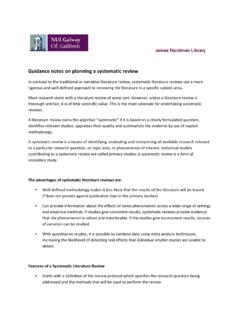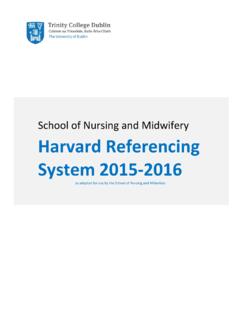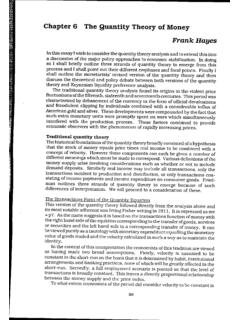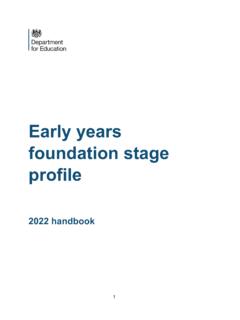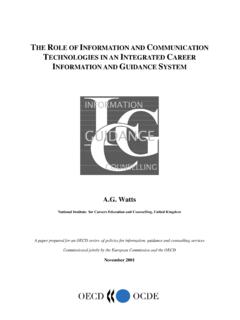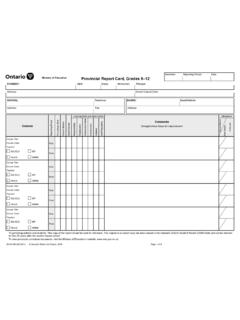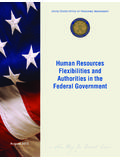Transcription of Framework for the Assessment of Vulnerable
1 Framework for theAssessment of VulnerableChildren & their FamiliesAssessment Tool and Practice GuidanceHelen BuckleyJan HorwathSadhbh WhelanChildren s Research Centre Trinity College Dublin 2 t:+353 1 608 2901 f:+353 1 608 2347 by PrinciplesSeven practice principles underpin this Assessment Framework . 1. The immediate safety of the child must be the first consideration2. Assessments should be child-centred3. An ecological approach should underpin practice 4. Assessments should be inclusive and recognise the individual needs ofall children irrespective of age, gender, ethnicity and disability5. Multidisciplinary practice is fundamental and an irreducible element of good practice6.
2 An evidence-based and critically reflective approach should underpin Assessment practice7. High quality supervision should be provided and used by practitioners completing assessments 2006 Children s Research CentreTrinity CollegeDublin 2 Telephone: 353 1 608 2901 Facsimile: 353 1 608 2347 Email: 1902230-29-9978-1-902230-29-0 Framework for theAssessment ofVulnerable Children andtheir FamiliesAssessment Tool and Practice GuidanceApril 2006 Helen Buckley and Sadhbh WhelanChildren s Research Centre, Trinity College DublinJan Horwath University of SheffieldChildren s Research Centre, Trinity College Dublin2 Framework for the Assessment of Vulnerable Children and their Families engaging engaging engaging engaging engaging safeguarding safeguarding safeguarding safeguarding safeguarding collaborating collaborating
3 Collaborating collaborating collaborating protectingsharing/analysing/ planningrespondingdevisinggathering & reflectingthechildThe Assessment WheelForewordThe Framework for the Assessment of VulnerableChildren and their Families was commissioned bythree former health boards - the North EasternHealth Board, the South Eastern Health Board andthe South Western Area Health Board (these Boardshave now been subsumed into the Health ServiceExecutive). The purpose of the project was todevelop a template for Assessment that would guidepractitioners in responding to concerns aboutchildren by gathering information on all relevantaspects of their lives, and analysing this data inorder to plan interventions that would promotebetter outcomes for these children and project commenced in January 2002 and wasfunded for three years.
4 The first nine months werespent undertaking a consultative process with arange of professionals from the three Health Boardswith regard to the focus and format of theframework. Based on the information gathered atthis stage, and in collaboration with representativesfrom the three Boards, a draft set of materials,consisting of an Assessment Tool and PracticeGuidance, was produced. These were subsequentlypiloted in five sites during late 2003 and early2004. An evaluation of the assessments undertakenby practitioners was conducted in 2004. Asanticipated, this evaluation highlighted that someaspects of the Assessment Tool needed to berevised, and changes were then made to theoriginal Assessment Framework .
5 These were includedin the revised version of the Assessment Frameworksubmitted to the Health Boards in February , bearing in mind the brief period allocatedfor piloting, the research team and thecommissioning Health Boards considered that moretime would be required to refine the use of thefinal step included in the Assessment Tool, thesharing and analysis of the data, and planningsuitable interventions. This document is essentially a work in progress. TheAssessment Framework is currently in use in thepilot HSE areas in a variety of service contexts. It isenvisaged that after a further period, when moreexperience of the use of the Framework in practicehas been gained, the materials will be re-evaluatedand further revised before being finalised.
6 These revisions will take account of practitioners experiences of undertaking assessments, as well asthe systems, structures and training required tosupport full implementation of the AssessmentFramework. Moreover, from the outset, theintention was for the Framework to be applicable inmulti-disciplinary settings as well as on social workteams. This poses quite a challenge given thedifferent professional roles in the child protectionand welfare network. The Assessment Framework iscurrently being used within the Health ServiceExecutive both as a multi-disciplinary and as asingle discipline (social work) approach. It isanticipated that learning from the various contextsand approaches that are now being utilised willfurther enhance the applicability of the frameworkand provide information about the structuresrequired to facilitate its for the Assessment of Vulnerable Children and their Families4 Framework for the Assessment of Vulnerable Children and their FamiliesContentsAcknowledgements8 Introduction9 Background to the Development of the Assessment Framework9 Aims and Objectives9 Who should use the Practice guidance and Assessment Tool?
7 10 How to use the Assessment Framework10 PART ONE - Assessment TOOLI ntroduction to the Assessment Tool11 Gathering and Making Sense of the Information: The Five Key Questions12 Practice Principles13 The Three Concurrent ActivitiesEngaging16 Safeguarding17 Collaborating18 Multi-disciplinary Contributions19 The Five StepsStep 1 Responding24 Step 2 Protecting25 Step 3 Devising26 Step 4 Gathering & Reflecting27 Gathering Information27 The Three Dimensions of a Child's Life30 Additional Considerations in Relation to Dimension 134 Children with Disabilities and Complex Health Needs34 Children from Ethnic Minorities36 Additional Considerations in Relation to Dimension 238 Issues Impacting on Parental Capacity38 Knowing the Child40 Step 5 Sharing.
8 Analysing and Planning41 PART TWO - PRACTICE GUIDANCEI ntroduction45 Practice Principles45 Section OneThe Assessment Process48 Three Concurrent ActivitiesEngaging51 Safeguarding53 Collaborating55 Children s Research Centre, Trinity College DublinStep 1: Responding59 Step 2: Protecting61 Thresholds 61 Step 3: Devising63 Getting Ready for an Assessment63 Timescales63 Step 4: Gathering and Reflecting65 Gathering Information65 The Three Dimensions of a Child's Life66 Dimension 1 Child's Needs67 Relationships, Attachments, Affection and Resilience67 Assessing the Additional Needs of Some Children68 Dimension 2 Parenting Capacity to Meet Needs72 Impact of Problem Alcohol and Drug Use72 Impact of Mental Health Difficulties74 Impact on Parental Capacity of Having a Disability or Complex Health Need76 Impact of Domestic Violence77 Impact of Parenting Alone79 Impact of Being an Adolescent Parent/Carer79 Impact of the Parent/Carer's own Experience of Being Parented 80 Impact of Having a Child with Disabilities or a Child with Complex Health Needs81 Impact on Parenting Capacity of Being a Member of an Ethnic Minority Group82 Impact of Socio-Economic Factors83
9 Step 5: Sharing, Analysing & Planning85 Preparing the Assessment Report85 Sharing the Assessment Report86 The Multi-disciplinary Assessment Meeting86 Assessing Parental Motivation to Change87 Influences on Judgement87 Formulating the Intervention Plan88 Section TwoPractice Principles: Introduction90 Practice Principle 1 The Immediate Safety of the Child Must Be the First Consideration90 Reaching Thresholds92 Recommended Reading92 Practice Principle 2 Assessments Should be Child Centred92 Engaging Children92 Working with Teenagers93 Engaging Siblings93 Direct Work with Children93 Assessing a Child's Attachment Patterns and Level of Resilience94 Recommended Reading96 Practice Principle 3 An Ecological Approach Should Underpin Practice97 Different Elements of a Child's Environment97 Factors in a Child and Family's Environment that Affect Parent/Carer Capacity98 Impact of problem alcohol and drug use on parenting
10 Capacity98 Impact of mental health difficulties on parenting capacity99 Impact of a disability on parenting capacity100 Impact of domestic violence on parenting capacity100 Maintaining a Focus on Strengths and Protective Factors101 Recommended Reading102 Practice Principle 4 Assessments Should be Inclusive and Recognise the Individual Needs of the ChildIrrespective of Age, Gender, Ethnicity and Disability103 Children with Disabilities and Complex Health Needs103 Minority Groups104 Engaging Men: Fathers and Father Figures105 Engaging Involuntary and Aggressive Clients106 Working with Non-abusing Mothers108 Recommended Reading1086 Framework for the Assessment of Vulnerable Children and their FamiliesPractice Principle 5 Multi-disciplinary Practice is Fundamental and an Irreducible Element of Good Practice 109 What is Multi-disciplinary Practice?
